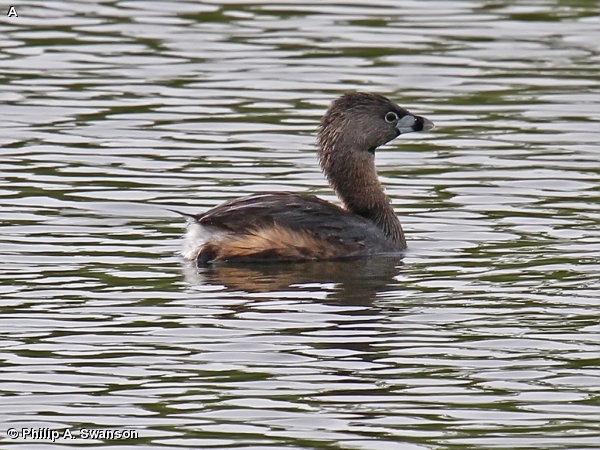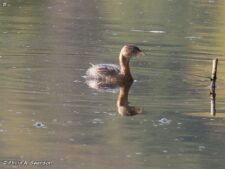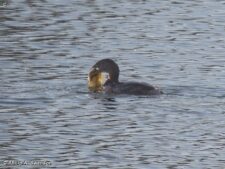
13.5 inches long. The Pied-billed Grebe is a small stocky bodied grebe with a short thick bill. The plumage is brown overall, darker on the crown and back. It is white on the undertail. The dark face contrasts with a light eye ring. In breeding plumage there is a black ring around the bluish-white bill and a black chin and throat. In non-breeding plumage there is no black ring around the bill and the throat is white.
The Pied-billed Grebe is a common migrant in the area that can show up in the spring from early March through late May and again in the fall from September through late November. During the right time it usually can easily be seen at the Great Marsh.
The Pied-billed Grebe nests in emergent vegetation. It takes most food by diving either in open water or among aquatic vegetation. The nest of this bird is a floating platform. The parents share the duties of nest-building, incubation, and care of the young. The feet of the Pied-billed Grebe are set far back on its body and trail awkwardly behind the body while in flight. However it is seldom seen in flight since it migrates by night, landing on the nearest body of water before or at dawn, and in part because it usually prefers to escape danger either by diving or by slowly sinking out of view rather than flying. It is an aggressive bird, chasing, and attacking members of its own species and other birds. This secretive grebe has a far-reaching “caow, caow, caow” call that can often be heard before the calling bird is seen.
Disclaimer: The content of NatureSearch is provided by dedicated volunteer Naturalists of Fontenelle Forest who strive to provide the most accurate information available. Contributors of the images retain their copyrights. The point of contact for this page is: Phil Swanson.


